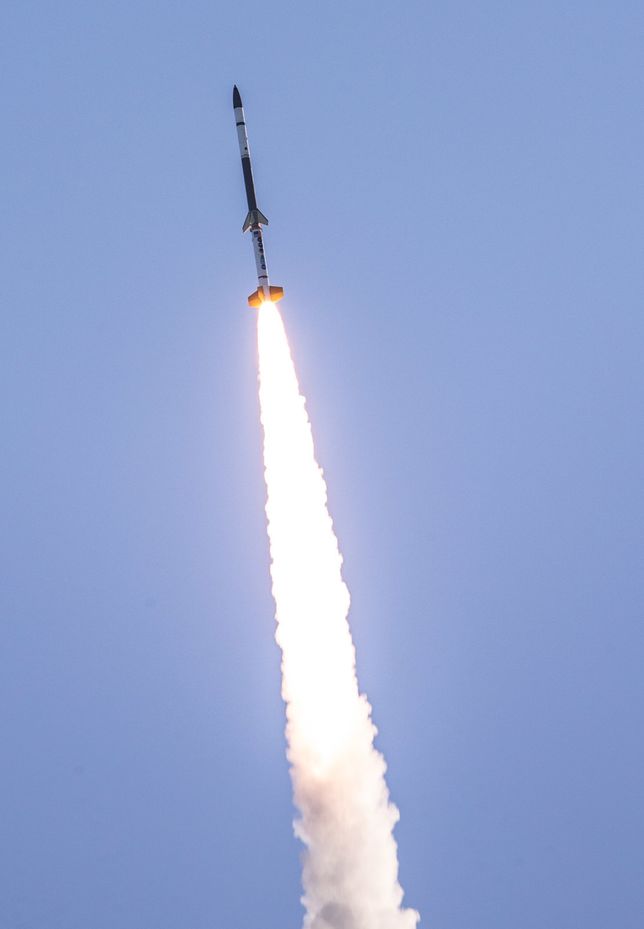
A version of this story appeared in the daily Threat Status newsletter from The Washington Times.
Click here to receive Threat Status delivered directly to your inbox each weekday.
China’s focused development of next-generation hypersonic ballistic missiles has U.S. defense experts worried, mostly because Beijing builds its programs on American research and development.
Mark Lewis, CEO of the Purdue Applied Research Institute, says Beijing has been copying America’s homework for years, letting Chinese defense firms stride ahead in hypersonics.
“I think we went wrong in a couple of ways,” Mr. Lewis said on the latest episode of the Threat Status weekly podcast. “One was a bit of hubris. I don’t think we could have conceived of someone else basically leapfrogging us in this technology.”
Mr. Lewis explained that China’s theft of American intellectual property is well-known and it has greatly sped up development. China is also helped by its economic structure, where defense efforts like hypersonics are elevated to statewide development projects.
“I have to tell you my hat’s off to China,” Mr. Lewis said. “They have identified hypersonics as a key area for their investments. It’s a national-level effort. One measure of that is the number of universities in China that are working in hypersonics. The number of papers that they’re publishing in the open literature was an indication of the magnitude of the efforts across the board.”
According to a Politico report from 2019, China published over 700 papers concerning hypersonic missile development in 2017 versus America’s 207. The key to this discrepancy in research, according to Mr. Lewis, is the U.S.’ inconsistent investment strategy when it comes to hypersonics.
“We told the world: ‘Hey, this is an important area to invest in,’ and then we kept taking our foot off the gas. We’d invest and we’d stop. We’d invest and we’d stop,” he said. “So in some ways, we made it easy for our competitors to pick up where we left off.”
Mr. Lewis advocated for the eventual mass production of hypersonic missiles, asserting that production costs are far too expensive.
“The biggest technical challenge that we’ve got is to get the cost of these systems down so we can afford to produce them in the numbers that we require,” he said. “And maybe, down the line, spin-offs to commercial technology, spin-offs to space technology as well.”
Still, Mr. Lewis said the U.S. is making significant progress, adding that China is Washington’s main hypersonic rival. While Russia has deployed its hypersonics in its war against Ukraine, the weapons haven’t substantially put the Russians ahead.
However, Mr. Lewis argues that Russia’s ineffective use of hypersonics in Ukraine accomplished a secondary goal: getting U.S. leaders to doubt the effectiveness of hypersonic ballistic missiles.
“I had people in the Pentagon ask me, ‘Well, the Russians used hypersonic weapons. They didn’t work very well. So does that mean all this stuff about hypersonic weapons is all hype because they’re not really very effective?’” Mr. Lewis said. “And I’m thinking, ‘Oh, wow. Score a victory for the Russians in that one because that was entirely wrong.’ That was exactly the wrong message to take away.”
Hypersonic missiles can shift their direction midflight, making them much harder to shoot down than traditional ballistic missiles. Mr. Lewis argues that ground-based defenses have to be much more mobile to stand up to the threat of hypersonics.
“It has to be about three times more maneuverable,” Mr. Lewis told Threat Status.“If I’ve got a hypersonic system, it’s much more maneuverable than if it’s a simple ballistic. So that means the defensive system has to be even more maneuverable.”
Hypersonic missiles could throw a wrench into President Trump’s proposed Golden Dome missile defense shield. Modeled after Israel’s Iron Dome missile defense system, Golden Dome is set to expand upon America’s existing missile defense infrastructure while layering different options.
The program has drawn cheers from the MAGA movement and criticism from opponents who say the project is far too expensive and threatens to disrupt the global deterrence order. Mr. Trump announced in May that the project would cost around $175 billion and would be completed by the time he leaves office.








